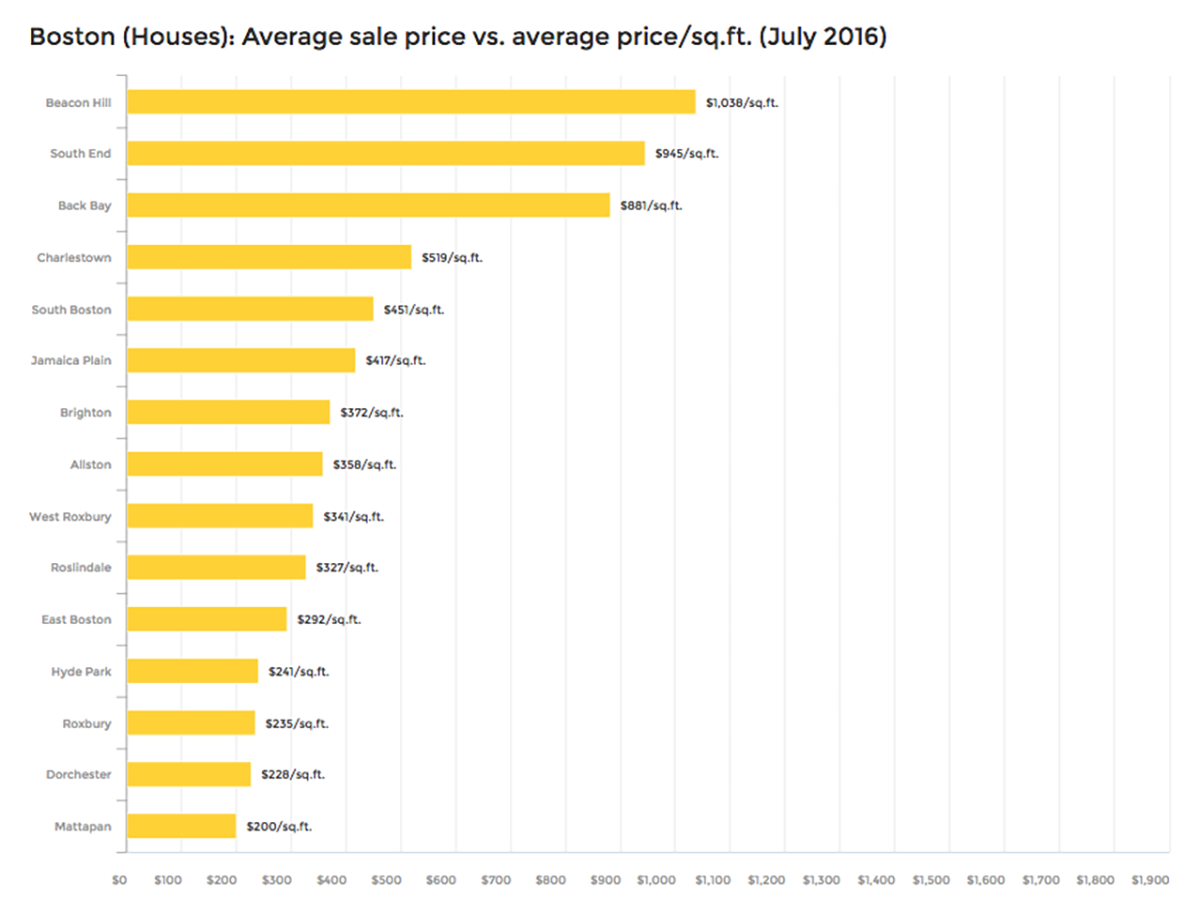Which Neighborhood Is Really the Most Expensive in Boston?
Beacon Hill photo by Lisa DeCotis
Determining the most expensive neighborhood in Boston seems like a relatively simple task. The more dollar signs there are, the more expensive the area, right?
At first glance, yes—a congregation of costly cribs equates to an expensive neighborhood. But when taking a closer look, it turns out that the title of priciest precinct changes depending on a few different factors.
“It depends on which metric you’re using to measure real estate prices. Different methods can produce very different results,” says Constantine Valhouli, cofounder of real estate analytics site NeighborhoodX.
Traditionally, real estate is measured by average closing prices. Valhouli explains that these prices give information on transaction sizes, but don’t really offer a point of comparison. He says a good place to start is the average price per square foot.
“Two neighborhoods might have the same average selling price—but in one neighborhood, that amount buys a house while in another, it only purchases a compact condo. This is why price per square foot is a much more effective metric for comparisons,” says Valhouli. “On the other hand, two neighborhoods could have nearly identical prices per square foot but there is a difference in average selling prices because one has much larger properties.”
A new NeighborhoodX analysis pitted average sale prices against average prices per square foot in Boston. The results show multiple winners for the title of most expensive neighborhood. By looking at closed transactions of houses (not condos) in Boston from January to June 2016, Valhouli saw how rankings became rearranged.
When examining transactions by average sale price, Back Bay comes in as the number one most expensive at $4.75 million, followed by Beacon Hill and the South End. But when ranked by price per square foot, the most expensive neighborhood becomes Beacon Hill at $1,038 per square foot—then the South End and Back Bay.
We suppose Boston real estate, much like life, is all about perspective. Check out the comparison below, or for an interactive version, click here. 



